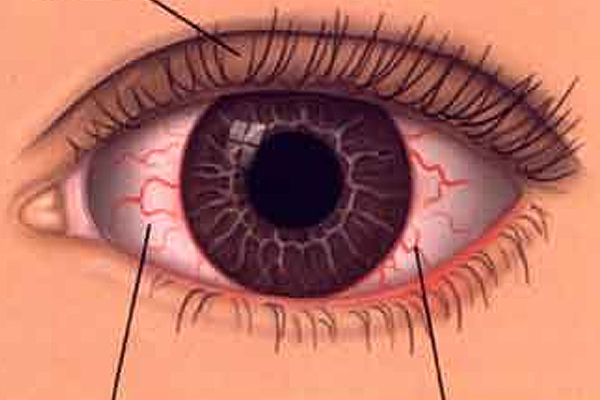
Conjunctivitis is an inflammation or infection of the conjunctiva (the membrane that covers the white of the eye and the inside of the eyelid). When the membrane is irritated, it swells and the blood vessels dilate. The eye then becomes red. That’s why conjunctivitis is sometimes called red eye or pink eye. It can occur in one or both eyes.
Conjunctivitis may cause one or more of the following signs and symptoms:
Conjunctivitis most often isn’t serious. But you should see an eye doctor at the first signs. Prompt treatment helps prevent damage to other parts of your eye. To make a diagnosis, your eye doctor will ask about your symptoms, any medications you take, and any illnesses or medical conditions you may have. The doctor will also check your eyes with a hand- held light and a special microscope called a slit lamp.
Chronic conjunctivitis is an eye inflammation. It is often caused by allergies or irritants in the environment. This problem can last for weeks or months. There is sometimes also an infection. Treatment involves reliving the symptoms and avoiding the cause of the inflammation.
Grass, pollen, dust mold, and animals are common causes of allergies. They make the eyes red, watery, and itchy. Both eyes are almost always inflamed.
The best way to control an allergy is to avoid its cause. Cold compresses and eyedrops can help reduce the swelling. They can also help relieve redness and itching. If your allergy is severe, your doctor may prescribe oral medication. Symptoms may take a number of weeks to clear up.
Air pollution, smoke, fumes, contact lenses, and chemicals can irritate the eyes. The eyes get red, swollen, and watery. One or both eyes may become inflamed.
Acute conjunctivitis is most often an eye infection. It can be caused by viruses or bacteria. Treatment involves keeping your eyes and hands clean. You may also use eyedrops or compresses. Most of the time, acute conjunctivitis clears up within a short time.
A cold, flu or other virus can spread to the eyes. This causes a watery discharge. The eyes may burn or itch and get red. The eyelids may also be swollen. This is often called pink eye.
Most viral infections go away on their own. Artificial tears and cold compresses can relieve burning and swelling. Your doctor may also prescribe medicated eyedrops. A viral infection can spread quickly. To keep it from spreading, wash your hands often. Don’t touch your eyes or share bedding or towels.
Bacterial infections most often occur in one eye. There may be a watery or a thick discharge from the eye. These infection can cause serious damage to the eye if not treated promptly.
Your doctor may prescribe eyedrops or ointment to kill the bacteria. Warm compresses can help keep the eyelids clean. And cold compresses can help relieve swelling to keep the bacteria from spreading, wash your hands often. Use a separate tissue to wipe each eye. Don’t touch your eyes or share bedding or towels.
Copyright © 1987-2024 Ojas Eye Hospital All rights reserved | Privacy Policy
*Disclaimer: All information on www.lasikindia.com for informational purposes only and is not intended to be a substitute for professional medical advice, diagnosis, or treatment. Always seek the advice of your physician or other qualified health care provider.